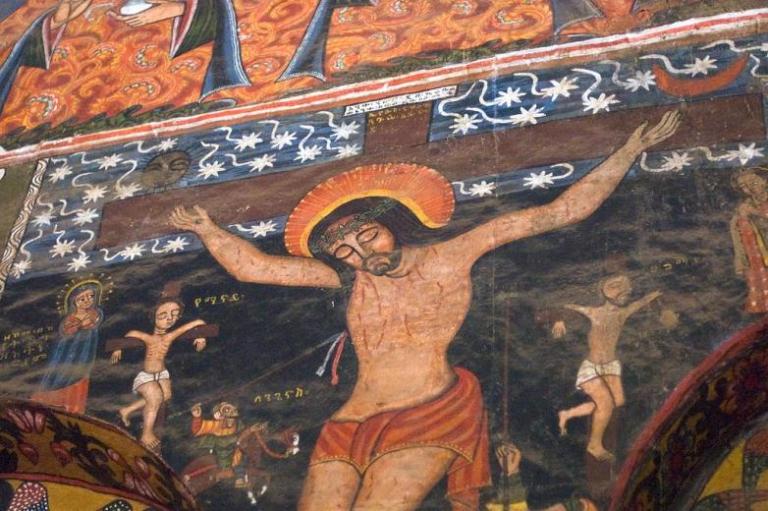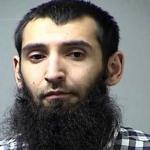As early as 1517, when the Reformation was just getting started, Martin Luther became interested in Ethiopian Christianity.
Here was a church with apostolic and New Testament origins, having been founded by the eunuch converted by Philip (Acts 8:26-40). It had no Pope, no indulgences, and no Purgatory. It had the Bible in the language of the people, married clergy, and a high view of Holy Communion without transubstantiation, giving the cup as well as the bread to the laity.
The Ethiopian church provided a model of what church could look like apart from Rome. As such, once Luther and his fellow evangelicals were excommunicated, it influenced the shape of Reformation churches.
Furthermore, in 1534, Luther because acquainted with a representative from the Ethiopian church, Michael the Deacon, who praised the Lutheran churches and the faith that Luther was teaching. Luther lauded Michael the Deacon and went so far as to affirm fellowship with him, something that he would never do with the Zwinglians or other church bodies.
So says seminary professor David D. Daniels in Martin Luther’s ‘dream’ church? It wasn’t in Europe | Religion News Service.
Though now connected with Eastern Orthodoxy, Ethiopian Christianity existed in relative isolation for centuries, so it developed its own distinctive practices. It did have certain associations with the Copts of Egypt.
The Lutherans elsewhere held up the Eastern Orthodox in their controversies with Rome, as reflected in the Lutheran confessions. As Christopher Neuendorf has observed, in the Apology of the Augsburg Confession, Melanchthon cited the Orthodox in his argument for the laity receiving both bread and wine in the Sacrament (XXII.4), his opposition to private masses (XXIV.6), and against the view that Holy Communion is a sacrifice (XXIV.93). In the Smalcald Articles, Luther used the Orthodox to demonstrate that churches do not need a pope (II.iv.4).
The next generation of Lutherans actually sent a delegation to the Patriarch of Constantinople to see if their churches were in accord. But nothing came of that. Clearly, there are major differences. Rev. Neuendorf explains the differences between Lutheranism and Orthodoxy.
But still, there were evidently differences between Michael the Deacon’s church in Ethiopia and that of the orthodox Patriarchs, at least in 1534.
Prof. Daniels did not give references for Luther’s association with Michael the Deacon. Christian Forum fills in those gaps, quoting the following passages from Luther:
“Three [sic] years ago there was an Ethiopian monk with us here, with whom we had discussions through an interpreter, and, having finished with all our articles, he said: ‘This is a good creed, that is, faith.’”
Martin Luther, Table Talk #4126 (Nov. 17, 1538) (translated by Mark DeGarmeaux).
“There has been with us in Germany, the Reverend Michael the Ethiopian, a Deacon. Conversing privately with him concerning Christian doctrine, we have heard that he properly agrees with the Symbol which the Western Church holds, and that he does not think differently about the Trinity than what the Western Church thinks. Therefore we commend him to good people as much as we surely can. For, although the Eastern Church has several dissimilar ceremonies, he judges that their dissimilarity does not nullify the unity of the church and does not militate against the faith, since the kingdom of Christ is the spiritual righteousness of the heart, the fear of God, and confidence through Christ. We also think this opinion is right. We have also learned from him, that the rite which we observe in the use of administration of the Lord’s Supper and the Mass, agrees with the Eastern Church. We wish, moreover, that all peoples would acknowledge and glorify Christ, and would submit to Him with true confidence in His mercy and with love for one’s neighbor. For this reason we ask that good people would demonstrate Christian love also to this visitor.”
– Martin Luther, Letter of Introduction for Deacon Michael the Ethiopian (July 7, 1534) (translated by Donald D. Schoewe; translation revised by Mark DeGarmeaux).
I find it quite plausible that the Ethiopian church was influential on the newly-forming Lutheran churches. And this would not be the only example of African churches influencing the Reformation. There is, of course, St. Augustine of Hippo from Carthage. Also St. Athanasius, the bishop of Alexandria in Egypt, as well as other church fathers in Alexandria and northern Africa.
Flash forward 500 years: The largest Lutheran church body in the world is Mekane Yesus (“place of Jesus”) with some 8.3 million members. Also perhaps the fastest growing. Just a few years ago, it had 5 million. Also, Mekane Yesus has broken off with the Lutheran World Federation on the issues of sexuality and liberal theology and is currently in talks with the Lutheran Church Missouri Synod.
So the mutual affinity between Luther and Ethiopia continues!
Illustration: Church of Debra Berhan Selassie, Gondar, Ethiopia. 18th century. by A. Davey from Where I Live Now: Pacific Northwest (The Crucifiction Uploaded by Elitre) [CC BY 2.0 (http://creativecommons.org/licenses/by/2.0)], via Wikimedia Commons














